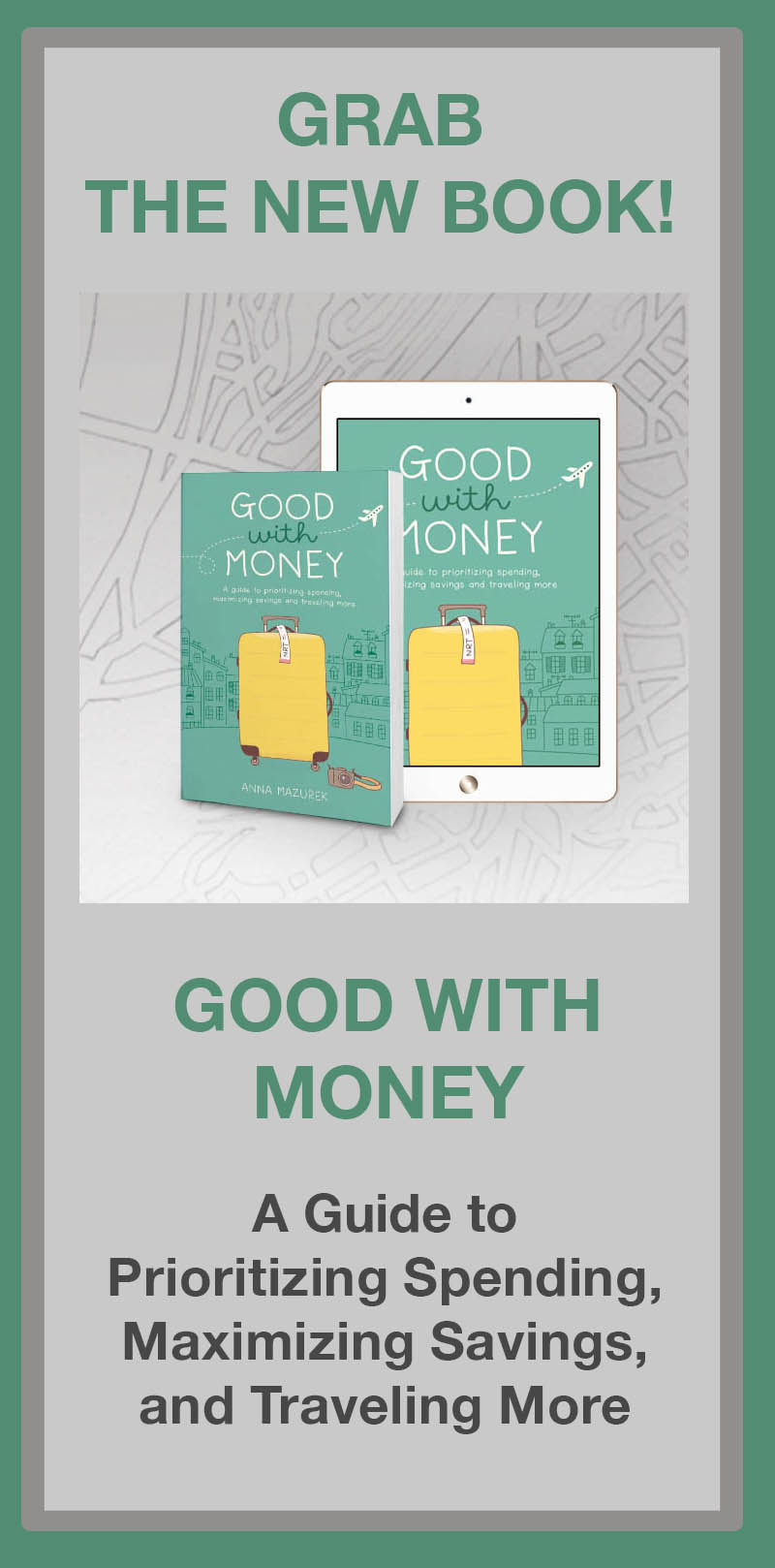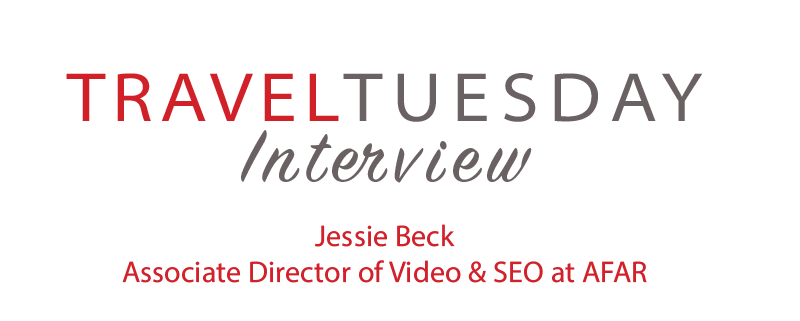 In the latest Travel Tuesday Interview, I chat with Jessie Beck, the associate director of SEO and video at AFAR, a travel magazine and media company. From studying abroad in Malta to living in Madagascar for the Peace Corps, she’s a lifelong traveler. In this interview, she talks about her career, the latest travel trends and the future of travel media. And, her favorite hacks for cutting travel costs!
In the latest Travel Tuesday Interview, I chat with Jessie Beck, the associate director of SEO and video at AFAR, a travel magazine and media company. From studying abroad in Malta to living in Madagascar for the Peace Corps, she’s a lifelong traveler. In this interview, she talks about her career, the latest travel trends and the future of travel media. And, her favorite hacks for cutting travel costs!
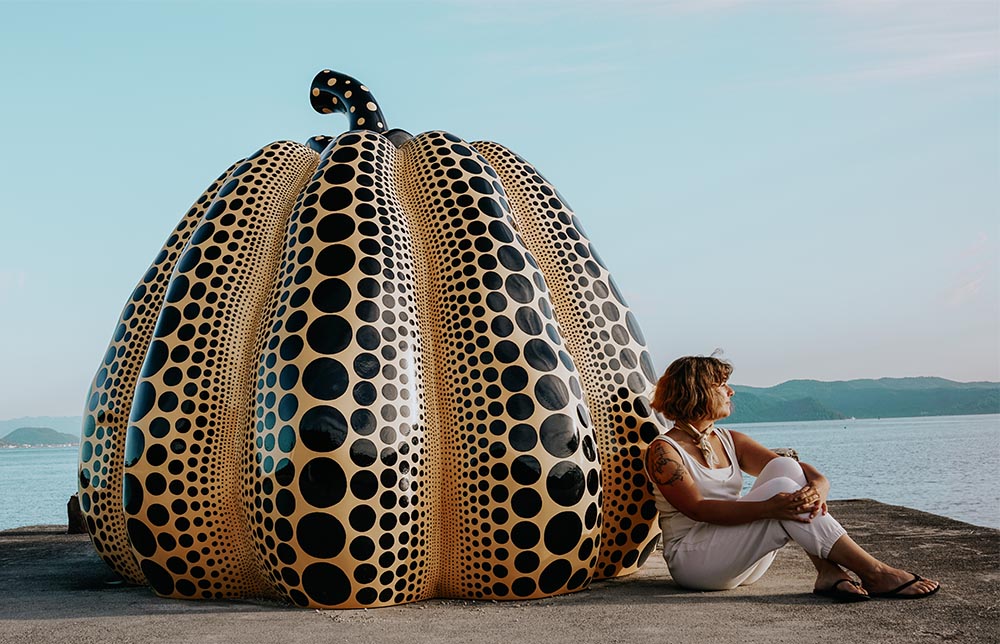 AFAR magazine’s associate editor of SEO and video, Jessie Beck, has lived across the world from Madagascar to Malta. Here she’s on Naoshima, Japan’s art island. Photo courtesy of Jessie Beck.
AFAR magazine’s associate editor of SEO and video, Jessie Beck, has lived across the world from Madagascar to Malta. Here she’s on Naoshima, Japan’s art island. Photo courtesy of Jessie Beck.
Name: Jessie Beck
Age: 35
Home Base: San Francisco, CA
Country Count: 50
Social Media: TikTok // Instagram
Travel Blog: wheresjessieb.com
Tell us about how you started working in travel and your current role as the associate director of SEO and video at AFAR. What’s your average workday like?
I got started in travel as the editor at a small study abroad website but took a years-long detour into tech (which is easy to do in San Francisco). I stayed connected to the travel industry throughout my time in tech, freelancing for travel brands like Tortuga Backpacks and Carryology, while also maintaining my own travel blog, Where’s Jessie B.
When I finally left tech to join AFAR as their SEO Manager, it was a dream to work for a brand I had loved as a reader for years. In my four years there, I’ve gone beyond just “doing SEO” and have also launched our YouTube channel, written a few pieces (one of the most fun ones to write and keep up to date has been 11 Easy Weekend Getaways From San Francisco), and spend countless hours behind the scenes improving our website. A typical day for me is a mix of answering questions about SEO, giving advice to our editors on SEO best practices for pieces they’re working on, delivering analytics, and then popping over to make sure our small but mighty video team is on track.
Even though I’m not traveling as much as an editor does (I have had a handful of opportunities to join on a press trip here and there), the work is far more interesting than any other space I’ve been in. Travel is such a dynamic and people-centric field to work in.
How has the travel media industry evolved since the pandemic?
The pandemic was a huge blow to the travel industry at large, and I think it has changed it in a number of important ways. Travel prices dipped initially, but then surged, and haven’t quite reverted back to 2019 numbers. Destination Marketing Organizations (DMOs) cut a lot of staff, and PR was basically on hold for a year, which influenced our coverage and advertising dollars. Travelers looked for more domestic and outdoor adventure, so we too focused on those experiences. Although we’re seeing some of these pandemic trends fade away, there are a few that have stuck. Domestic travel continues to be a larger focus than in 2019, and I think teams are operating in a leaner way than before.
I think it also expedited the digitization of some media companies — aside from a few skipped issues in 2020, we still have our print magazine, but I have seen other brands (not just in travel, but media at large) shutter that arm of their business entirely. Which I think will be interesting in the coming years, because print has long been and still is held at a higher status, more prestigious than digital, even though digital now brings in the bulk of readers and revenue for many media brands.
Currently, though, the more interesting thing impacting travel media and media at large (in my opinion, as an SEO professional) is generative AI. On one end, you have people using it to plan trips and get suggestions, but on the other [hand], you have the backlash against it. This audience is putting in extra effort to make sure recommendations are coming from an actual human. The result: an increase in travel searches on platforms like TikTok and Reddit and also lots of smaller blogs benefiting in search as audiences express some distrust in larger media brands. Which is good news for you, Anna!
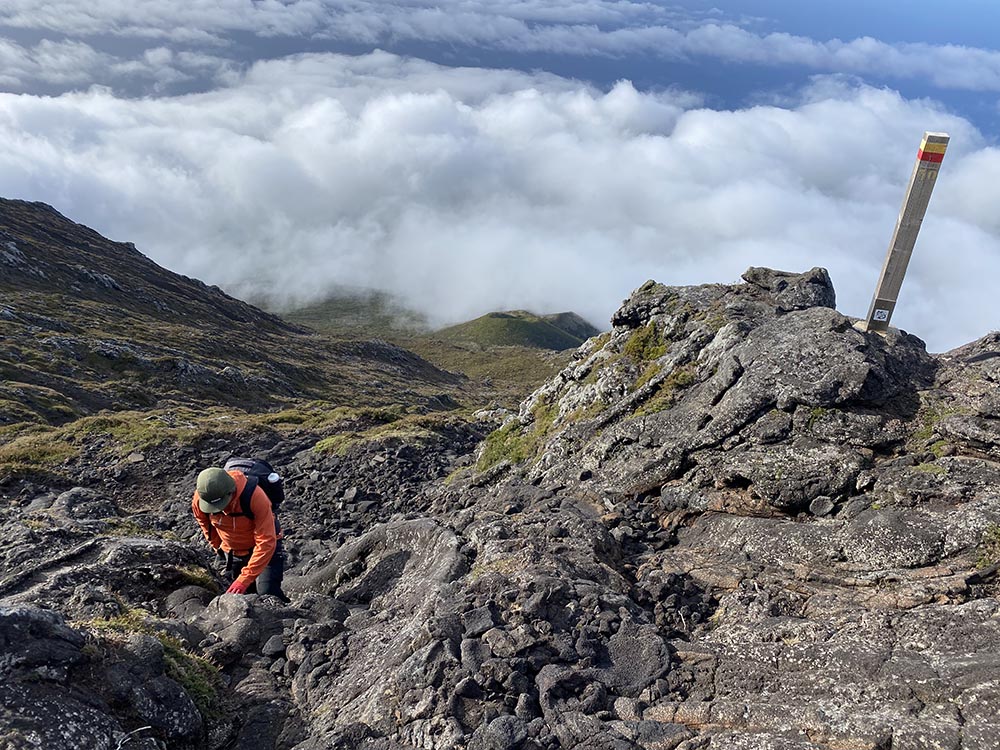 A view from the top of the 7,713-foot Mount Pico, the tallest peak in Portugal on Pico Island in the Azores. Photo courtesy of Jessie Beck.
A view from the top of the 7,713-foot Mount Pico, the tallest peak in Portugal on Pico Island in the Azores. Photo courtesy of Jessie Beck.
What are the biggest travel trends you are seeing now?
I look at Google Trends regularly, one travel-related trend I’m really excited to see is the increase in interest in solo female travel. I’m married, but I still travel solo pretty often, and I love it. It’s just such a different experience and an important one for women in particular to have. I know this is a gendered statement but many of us fall into these caretaking roles, spending a lot of energy thinking about others around us and their happiness. Solo travel allows me to take a break from that and focus on myself, my interests, my mood and interact with the world differently. It’s really freeing. I have a good friendship with myself, and I see these trips as a way to maintain it.
Another one is this travel dupe trend [swapping a popular destination for a similar but lesser-known place]. It’s mostly a catchy way to hook people on social media, but it’s a great concept. Many of the most popular destinations—Paris, Tokyo, Venice—in the world are overrun and overwhelmed by tourists yet there are so many comparable places we can go instead. So long as we’re not turning these alternative places into the next Bali or Tulum, I think it’s a good approach to overtourism.
How has working in travel media changed how you travel?
Unfortunately for my bank account, I think working for AFAR has led me to spend more money when I travel. We’re a luxury brand and often cover these insane, gorgeous hotels and experiences, and I definitely get hooked sometimes. This past winter I splurged on two nights at a $600/night hotel (El Perdido in Todos Santos) for me and my husband and that would have been an unthinkable price a few years ago. I don’t regret it at all, it was amazing (side note: Tribu* is another wonderful and much more affordable hotel nearby).
Can you share a few of your current travel hacks for cutting costs?
The biggest thing you can do to cut costs is to avoid traveling at peak times and focus on shoulder season travel. Pre-pandemic, this meant traveling outside of school breaks and holidays, [and] going to domestic destinations in the spring/fall instead of the summer. However, off-season travel has become more common since the pandemic, so if that’s not saving you any money look at traveling during the week (not the weekend) instead.
You’ll also pay a higher premium for planning a trip to those super popular tourist destinations, so consider “second cities” or less well-known but still amazing places to visit. For example, instead of Cabo San Lucas, look at other areas of Baja California Sur, like the East Cape, La Paz, Pescadero, or Todos Santos.
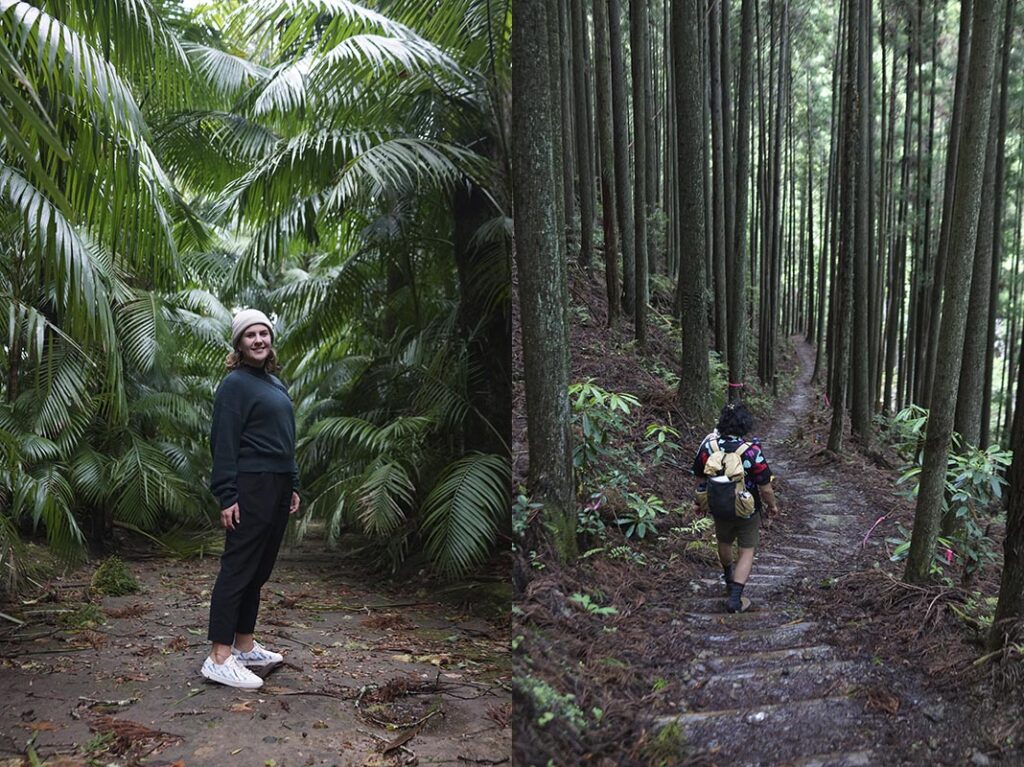 Left: Jessie hiking in the Azores, a Portuguese archipelago. Right: The Komano Kodo is an ancient pilgrimage route on Japan’s Kii Peninsula. Photo courtesy of Jessie Beck.
Left: Jessie hiking in the Azores, a Portuguese archipelago. Right: The Komano Kodo is an ancient pilgrimage route on Japan’s Kii Peninsula. Photo courtesy of Jessie Beck.
Share a few of your favorite locations and why people should add them to their travel list.
Oh, this question is always so hard! I have a lot of love for Madagascar and Malta since I spent so much time in both. Malta is such a weird little country and wholly underrated, though I think people are starting to get hip to its charm. Madagascar, on the other hand, isn’t as often visited but that’s largely because it’s so hard to get there. And once you’re there, it’s a lot of work to travel around. Still, it’s home to some truly amazing people and a really diverse set of landscapes. One of my favorite places is the tsingy “forests” at Tsingy de Bemaraha, which are these crazy limestone peaks that I’ve never seen anywhere else.
I also really enjoyed La Reunion, which is an island not too far from Madagascar and also officially part of France. Similarly, it has many different landscapes in a small place, including tropical beaches, an active volcano, and waterfall-filled mountains. Unlike Madagascar, though, it’s more developed (thanks to being a part of the EU) and easier to get around. Overall, an interesting blend of cultures, though.
Some of my most recent favorites, though, include hiking on the Kumano Kodo trail in Japan (and especially this amazing interactive novel Airbnb we stayed in towards the end!) and then spending a weekend on Naoshima, Japan’s “art island”. I also really loved spending New Year’s in the Azores — there are so many really cool, boutique hotels and the nature there is incredible as well.
It’s a tough time to work in journalism and media. What’s your advice for someone who wants to work in travel media?
Agreed. Though I also feel like we’re approaching a major crossroads. There are lots of smaller creators, influencers, and bloggers who are benefiting from the current landscape, and I think more traditional media brands need to take a look at what’s happening there if they want to keep up. We’re entering a world where we’re seeing more “personality-led” media and journalism. If your goal is to work on the editorial side, consider if you’re comfortable being the face of what you’re writing—most journalists are trained to take themselves out of the story and be more behind the scenes, but there’s no guarantee that that will be your experience.
Otherwise, know that there are many more people at every travel media company who make things run besides the editors and writers: audience development, marketing, sales, [and] operations. Those positions are less competitive but still just as interesting, in my opinion.
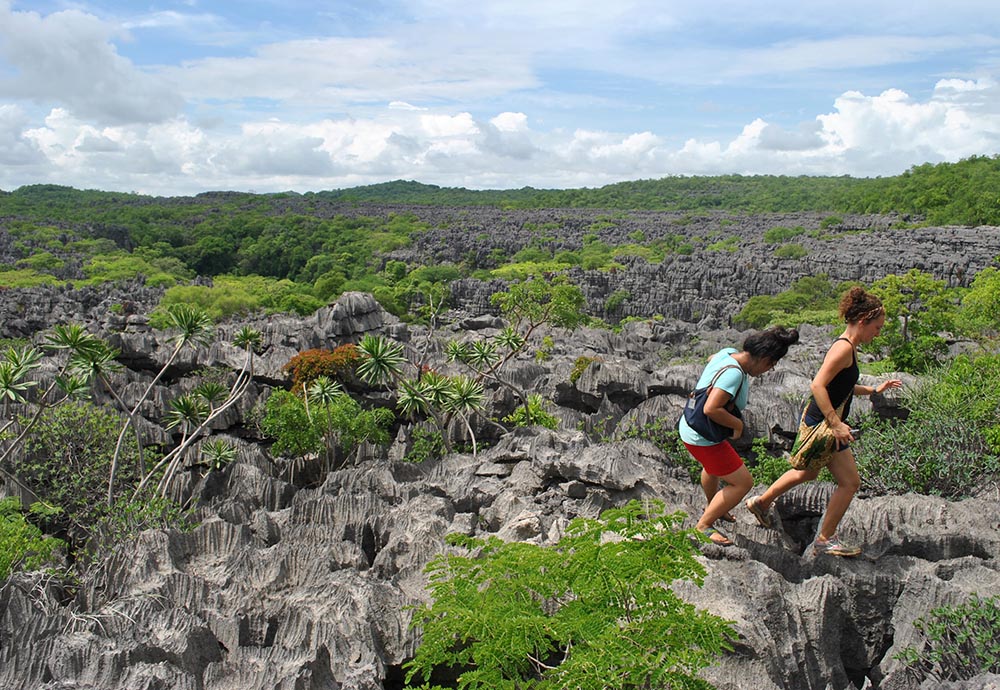 While living in Madagascar, Jessie hiked the Tsingy de Bemaraha National Park. Photo courtesy of Jessie Beck.
While living in Madagascar, Jessie hiked the Tsingy de Bemaraha National Park. Photo courtesy of Jessie Beck.
Travel is often the best teacher. What is the biggest lesson travel has taught you about yourself or the world?
Travel has really challenged my assumptions about what you “need” to live—especially in the Peace Corps when I had no running water, no fridge, no washing machine, no oven, and very few of the things an average American would consider “necessary.” I often find myself asking “do you?” when a friend says they really need XYZ thing.
This also translates to my packing philosophy. In Madagascar, if I packed anything more than what could fit on my lap during a taxi-brousse ride (basically a 20L backpack), it would go on top of the bus… which means it would get rained on if it rained and then I’d have a soggy bag full of clothes. That really forced me to go extreme with light packing.
What are three things you always pack for any trip?
I’m a very minimalist traveler but besides the obvious (toothbrush, wallet, underwear, etc.) I also always bring:
- Compression socks for any flight longer than three hours. I think everyone over 30 should wear these to help prevent blood clots and reduce restless legs. I like the merino wool ones by Comrad*.
- Instant coffee, just in case. I’m a coffee addict, and this is one of the few “just in case” items I allow myself since I’ve been caught without enough times to know better.
- Eye mask for sleeping, since I’m sensitive to light and you never know what the situation is going to be at your hotel or Airbnb.
What’s your next adventure?
I haven’t mentioned this yet, but I’m also a long-distance cyclist! My next adventure, which I’m training for right now, is a bikepacking trip on Vancouver Island this July. Please do follow along on Instagram for updates on the trip, and I’ll be publishing my map and itinerary on Where’s Jessie B. after the adventure is over as well!
*Please note that some affiliate links are used in this post. If you make a purchase, I earn a small commission at no cost to you, which goes toward the operating cost of maintaining this blog.

